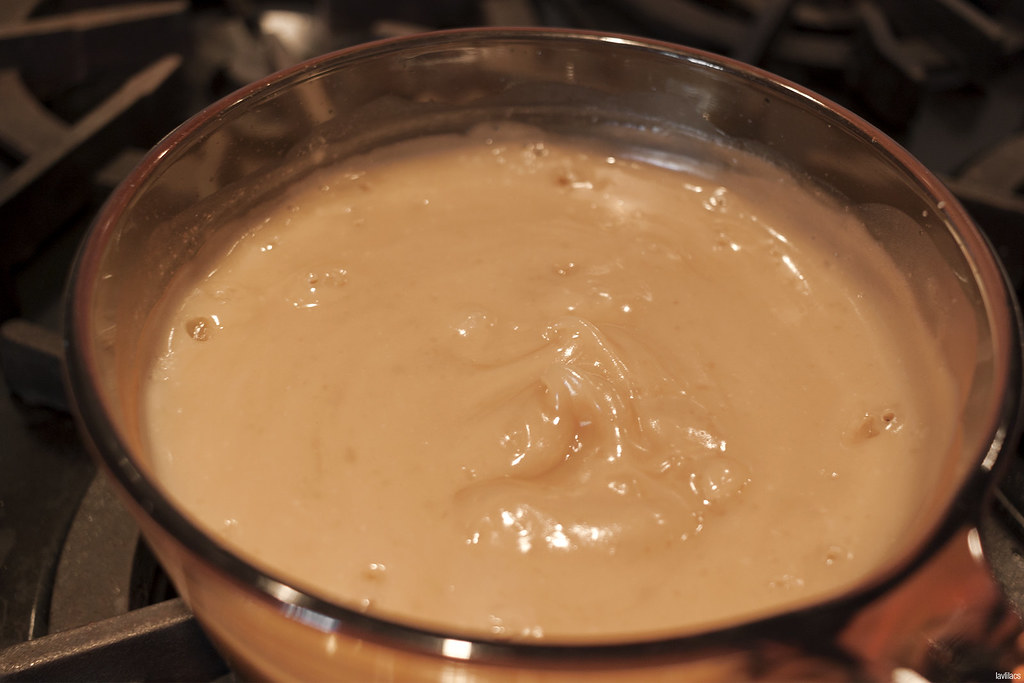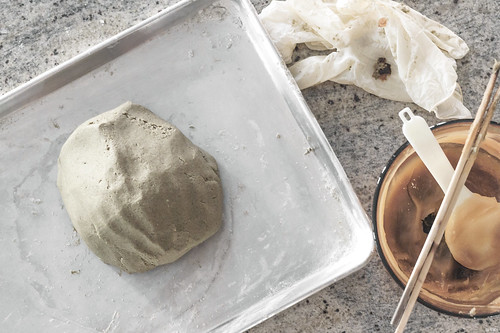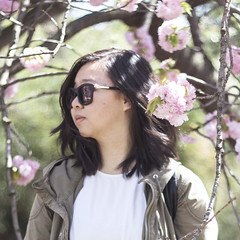Skunk Vine Rice Cake Balls 烏芹藤圓 | Taishan Eats

Skunk vine. Stink vine. Chinese fever vine. Paederia foetida. All those names refer to one type of plant. Yet not one sound remotely appetizing. Before I decided to make a record of this recipe, I hadn't a clue what the name of this ingredients was in English or Chinese. It was just something that was a part of a food Grandma used to make occasionally and something that I liked.
Good thing for the internet! It seems like this plant originated from eastern and southern Asia and grows mainly in tropical, hot and humid, climates. Some sources classify the skunk vine as a type of weed due to its fast growing and invasive tendencies. In Taishan, it is sun-dried and ground into a powder to be used in various foods.
Foo keen haang yuan 烏芹藤圓 is what Grandma calls the dark green, almost black, chewy spheres in Taishanese. I took it upon myself to, quite literally, translate it into skunk vine rice cake balls. There are also a couple of other Chinese names for this as well, cow poop ball 牛屎圓 and chicken poop vine ball 雞屎藤圓. Again, neither are redeeming in any way, shape, or form. But they really don't taste as bad as the name would suggest. Honestly!
I am a huge sucker for nostalgia. Despite my curiosity to try new things, I can't help but also yearn to revisit old favorites I have fond memories of. Recounting all those memories I made in Asia the last few months got me thinking about these unfortunately named treats that I remember Grandma made. But let's face it, my popo isn't getting any younger and the amount of traditional homestyle foods she's made in the recent years have greatly diminished. If I were to crave these in the future and knock on wood Grandma cannot make these unique foods anymore, it would become a lost art of sorts. I thought it would be an interesting way to not only keep a record of Grandma's recipes and learn about some Chinese traditions but also to spend more time with my popo.
Even if no one else finds this interesting, this will be my digital library of personal recipes.

Skunk Vine Rice Cake Balls - Foo Keen Haang Yuan - 烏芹藤圓
Dry ingredients mixture3 cups rice flour 米粉
1 cup glutinous rice flour 糯米粉
1-3 tbsp of skunk vine powder 烏芹藤粉*
Sugar paste
1 package of Chinese brown sugar 冰片糖 (or 1.5 cups cane sugar)
1 cup rice flour 米粉
3 cups water 水
* The amount of skunk vine powder is totally up to personal taste. Skunk vine is supposed to have a very strong sulphuric taste. The very traditional foods made with it, I think, uses a lot of powder to achieve a really pitch black final product. But I find the taste is too strong for my liking if I put too much (the most I've tried is 4 tbsp). Sourcing skunk vine powder outside of China might be a little difficult even in densely Chinese populated areas.
Directions
1. Mix the dry ingredients together. (I prefer sheet pan or anything wide and shallow. But a big bowl works too.)
2. Place the sugar and half of the water into a pot and bring it to a boil.
3. Reduce flame to a low-medium heat after all the sugar has melted.
4. Mix 1 cup of rice flour and the remaining half of the water together. Mix well!
5. Pour the rice flour + water into the sugar syrup when after all the sugar is melted.
6. Keep stirring the simple syrup and rice flour mixture until it starts to bubble and thicken. Before careful to not to burn the bottom.
7. Add the piping hot sugar paste to the dry ingredients mixture a little at a time to form a dough. Not all of the sugar paste will be used! Add just enough for everything to come together and not be sticky. A little paste goes a long way.
I recommend using chopsticks at first to stir the paste and the flours quickly. As the flour starts to make little clumps of dough, put on powder-free plastic gloves and start kneading by hand. If you can tolerate insane heat, then feel free to go barehanded.
8. Knead for about 10-15 minutes or until whenever all the flour and paste fully incorporates to form a dough ball. The dough should be soft, pliable, not sticky, and won't crumble when squished. A texture similar to fresh Play-doh. Even having a drier dough is okay. As long as it can be rolled into balls and still holds its shape relatively well.
9. Wet a bamboo steamer or place a steamer cloth on a pan.
10. Shape the dough into small grape-sized balls. Dog shapes are optional.
11. Boil water in a wok or pot.
12. Reduce flame to a medium and place the steamer full of rice cakes inside.
13. Before covering it with the lid, generously sprinkle water all over the rice cakes to prevent too much sticking and give it a nice sheen.
14. Steam on a medium flame for 30 minutes or until the rice cakes are cooked through.
15. Eat and enjoy!

The sugar paste should ultimately look similar to the above photo. It won't bubble a ton but it will make small spurts and be a little bubbly. This is also completely edible as is.
 |  |
The key to forming the dough is to work fast while the sugar paste is hot. Grandma says that the sugar paste is what helps to make the final product a bit soft. The glutinous rice flour also gives a slight chewiness. But overall, it should be quite firm with some chew.
If too much sugar paste is added and the dough is too sticky, add a little more rice flour or glutinous rice flour to the dough. If the dough is too dry, add a little more paste. If there is no more paste, add a bit of water. There isn't an exact science to this. Grandma just did everything by feel and approximation. She called me foolish for wanting to know exact measurements.

One of my fondest memories with these rice cake balls are the dog-shaped treats. I remember loving to pick those out whenever Grandma made them when I was a kid. The reasons for making them were never clear to me. They were just cute and unique amongst a basket full of boring spheres.
I only just learned from Grandma that these skunk vine rice cake balls are actually made for a specific Lunar calendar holiday, March 3rd 三月三節. When questioned, popo said she didn't know the specific reason for making such a food and it was just a tradition she kept by. Foo keen haang yuan were made to be eaten. The dogs were made to be hung by the outermost door as a home protector from bad luck and evil spirits.
Besides the skunk vine balls, she said bao kok (or ham sui kok) and something called wah hoi are also made in celebration of the March 3rd holiday.
Grandma's dog making method:
Pinch out a tail. Followed by ears. Then four legs. Get a toothpick and poke up the eyes, nose, and mouth. Her highlight was, of course, including a butthole for accuracy.

Grandma uses bamboo baskets to hold the rice cakes. The hole-y nature of it helped to let any of the extra water through. If not the rice cakes at the very bottom of a pan would be too soggy. She also suggested to only have 2-3 layers of rice cakes in order to avoid having any uncooked ones at the center of the pile. Keeping the dog-shaped ones on top will help to dodge any accidental severings of its delicate body parts.


Like I mentioned earlier, Grandma hasn't made these in a while. I had forgotten how her "dogs" looked. Would you agree and think her version (on the right) looks owl-esque?



0 comments: